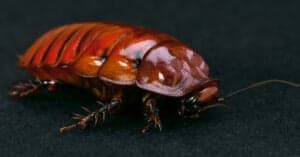Have you ever heard the expression “bug-eyed”? This term is over 100 years old and has been used to refer to people who have wide, bulging eyes. However, contrary to what the masses might believe, most bugs don’t actually have huge eyes at all. But some of them definitely do! Today, we’ve gathered 10 of the most jarring and unique insects with enlarged eyes that give the term “bug-eyed” all its meaning!
1. Dragonfly
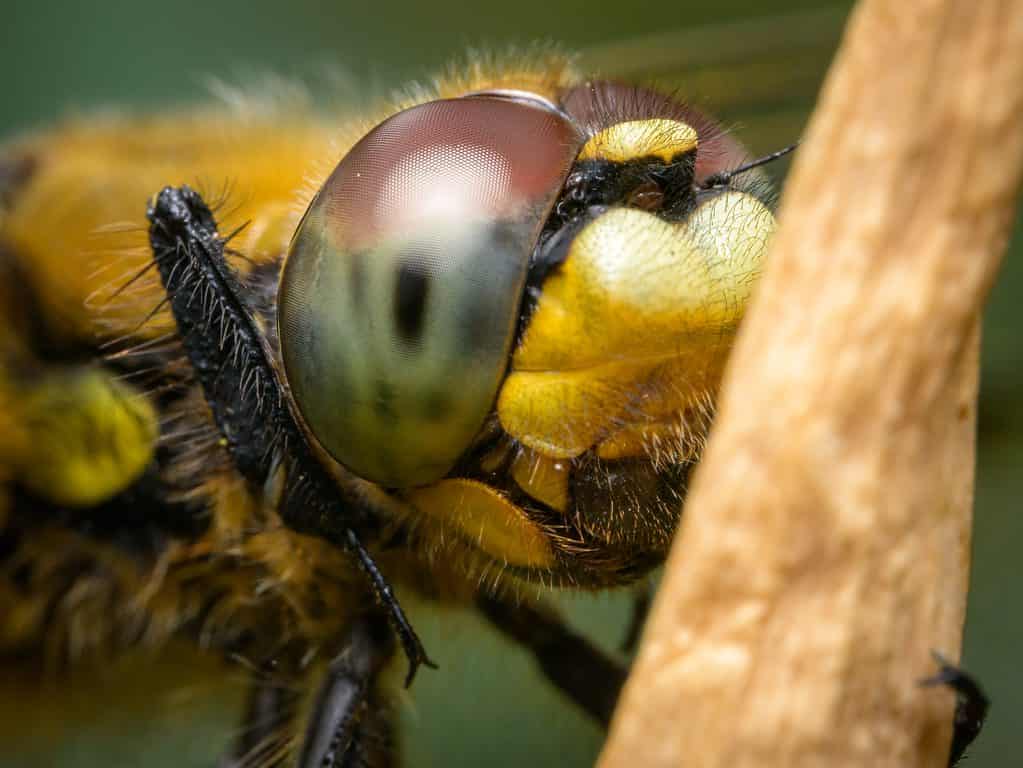
Dragonflies roamed the Earth during the same time as dinosaurs.
©Stefan Rotter/Shutterstock.com
As many people know, dragonflies are some of the most skilled hunters in the insect world. According to WIllistown Conservation Trust, “While hunting prey, dragonflies have a catch rate of 95%, higher than any other animal observed. The secret to their success lies in the many unique adaptations they have accumulated throughout their evolution.” Their huge eyes are one of these adaptions. The large size of their eyes gives them incredible visual prowess. This, combined with their incredible maneuvers during flight, makes them one of the deadliest insect predators out there.
2. Mantis
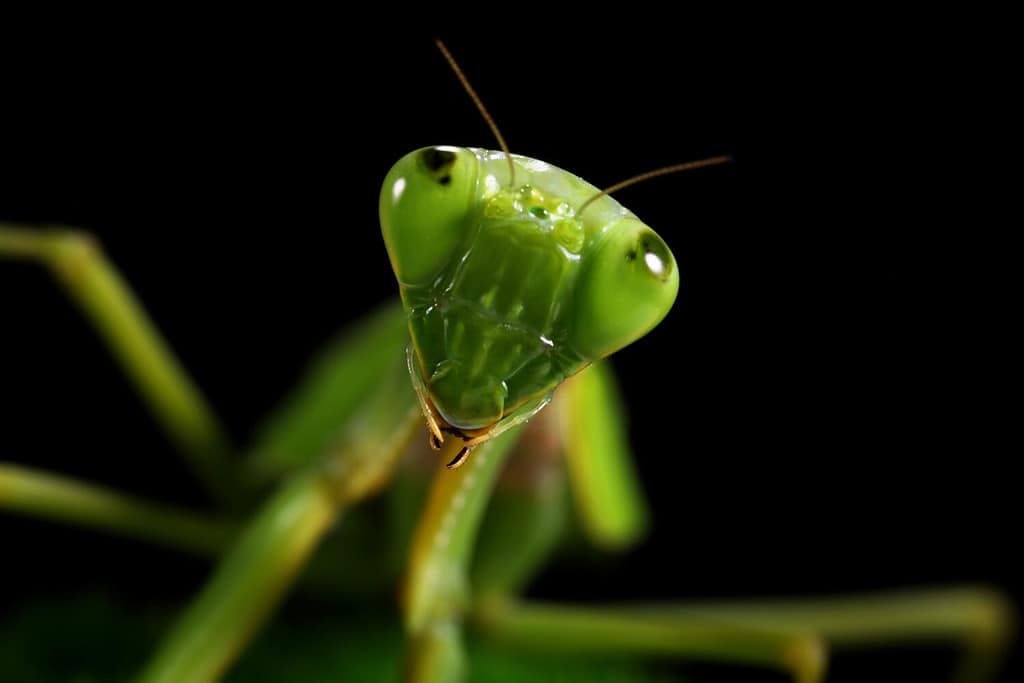
There are over 2,000 species of mantises.
©Lauren Suryanata/Shutterstock.com
While we’re on the subject of the world’s most lethal insect, we have to discuss mantises. For many, mantises represent peace, perseverance, and tranquility. This association likely comes from the incredible stillness that mantises are able to maintain while hunting. These insects use a tactic called “aggressive mimicry,” in which they attempt to camouflage themselves with the environment around them in order to surprise their prey. Their huge eyes have evolved over generations and give them the ability to discern light from dark, long and short distances, and the speed of movement. With mind-blowing momentum, mantises are able to strike their prey before it even has a chance to react.
3. Stalk-Eyed Fly
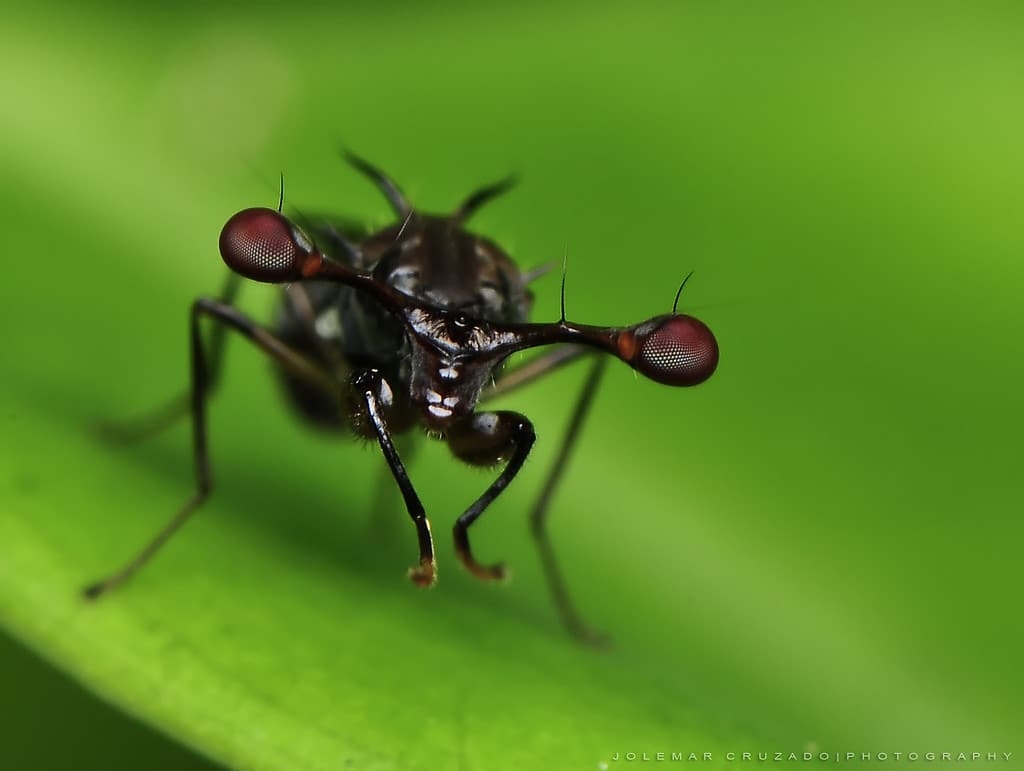
Stalk-eyed flies only grow to be roughly half an inch in length.
©Jojo Cruzado / CC BY 2.0 – License
A stalk-eyed fly looks like some weird work of science fiction. However, these insects are very real, and their long “eyestalks” are used for a variety of purposes in their day-to-day lives. Males with the longest eyestalks will find themselves more successful in mating, as length seems to be the female’s preference. However, if two males seem to think their stalks are of comparable size, they’ll use them to fight each other!
4. Cicada
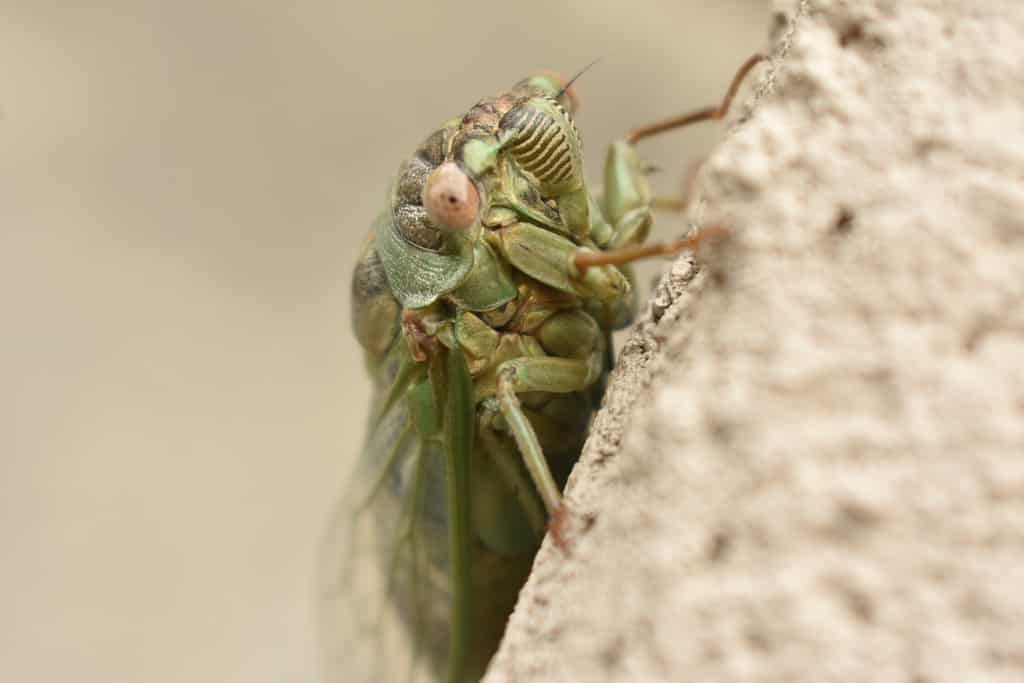
Cicadas can be found on every continent in the world besides Antarctica.
©Books Beans and Beads/Shutterstock.com
Although they may not be as jarring as some of the other entries on our list, one of the key characteristics of cicadas is their large, wide-set eyes. Although these two large eyes are the easiest to see, they actually have five eyes in total. These three extra eyes are positioned in between the two larger ones and are primarily used to discern light from dark. Unlike some of the other insects we’ve mentioned, cicadas aren’t predatory. In fact, they primarily feed on sap from a variety of different plants. They don’t even have the ability to bite! That being said, their sharp vision primarily functions as an aid to orient themselves during flight.
5. Robber Fly
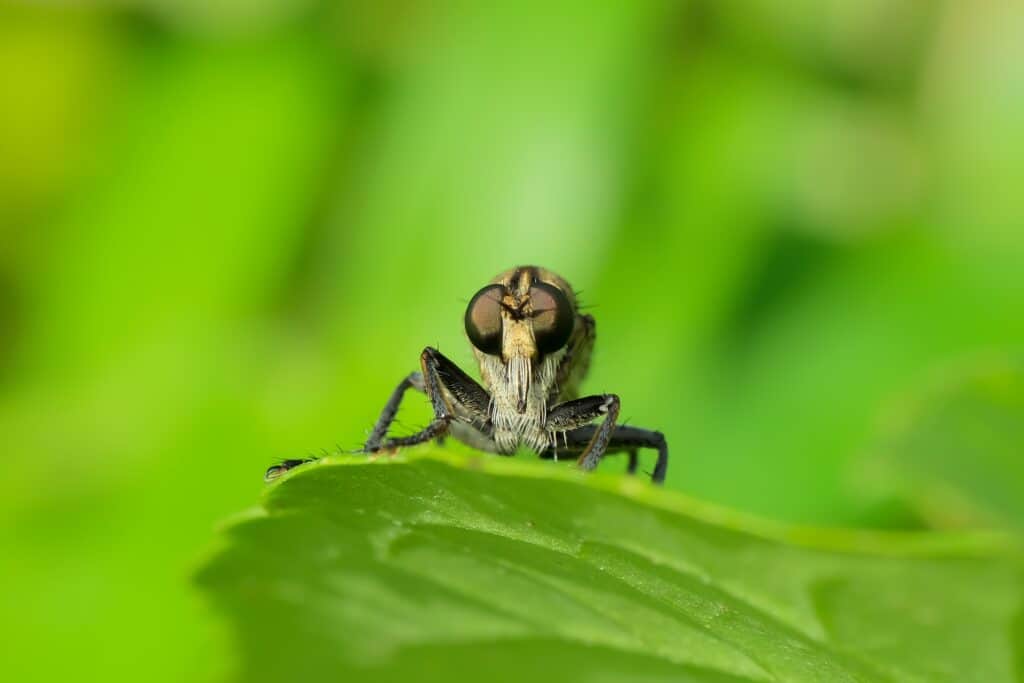
Robber flies are capable of biting, and it’s particularly painful compared to that of other insects.
©Kanurism/Shutterstock.com
Despite the fact that the robber fly is much smaller than some of the entries on this list, its vision rivals even the most advanced insect sight adaptations. In a study published by researchers at the University of Cambridge, it was found that the lenses present on the surface of the eye of a robber fly were larger towards the center and smaller on the edges. This allows this insect to see in high resolution and gives them the ability to lock on to their prey with stunning accuracy. They’re calling the “Top Gun of the fly world,” which is a nickname that completely embodies this insect’s talents.
6. Mayfly

Male mayflies live for roughly two days on average, whereas females usually live for just a few minutes.
©Eugene Dozmorov / CC BY 4.0 – License
Mayflies are part of the order Ephemeroptera, which is also comprised of dragonflies and damselflies. However, unlike these insects, mayflies have a shockingly short lifespan, with some living only a few minutes. That being said, it is well known that insects with short lifecycles are bound to evolve faster, and mayflies have done exactly that. Some of these bugs have what’s called “turban eyes” present on their head. This is an additional visual adaptation that helps males find females to mate with. This likely evolved as a way for males to quickly secure a mating partner before both of them inevitably perished. When your life is so short, every minute is crucial.
7. Big-Eyed Bug

Big-eyed bugs are usually found in gardens and on farmland.
©Katja Schulz / CC BY 2.0 – License
Who would have thought that there would be insects out there simply named “big-eyed bugs?” Well, the genus Geocoris is exactly that. These insects are part of the order Hemiptera, also known as true bugs. The huge eyes that are a key feature of these bugs give them a large field of vision and the ability to hunt their prey with increased accuracy. The fact that big-eyed bugs are such good hunters is greatly beneficial to mankind. These insects are central components of many ecosystems and feed on the eggs of other insects and pests like mites. Without them prowling around our gardens and farms, we’d likely have greater difficulty in growing our food.
8. House Fly
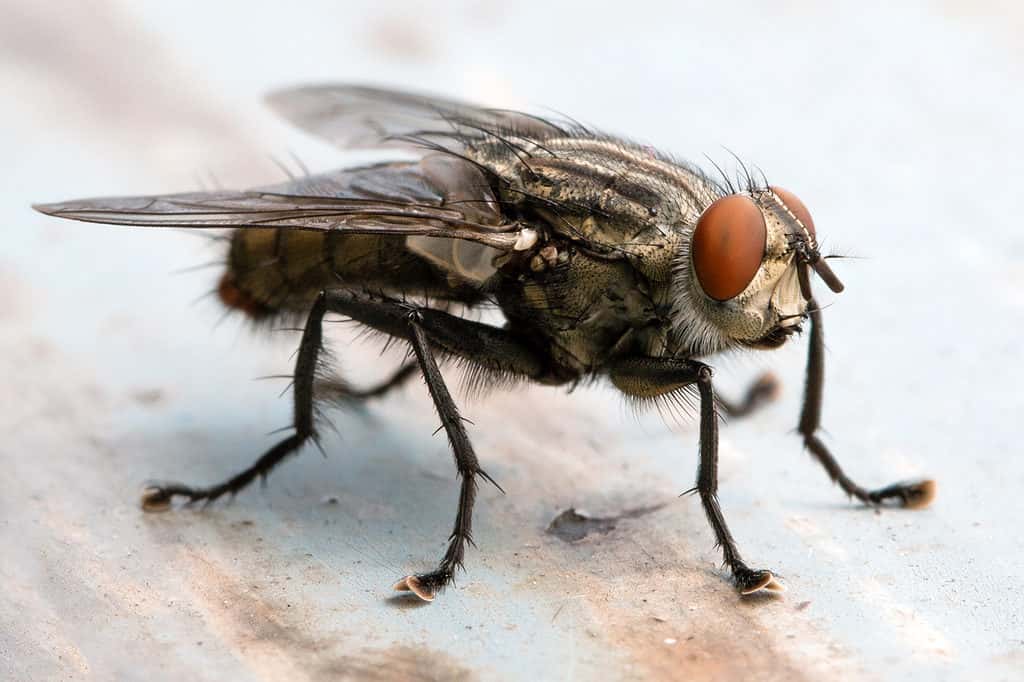
The house fly is the most common type of fly in the world.
©Abel Tumik/Shutterstock.com
It’s no secret that flies have some of the most interesting eyesight of any group of insects. Their large compound eyes give them the ability to see in ways that are incomprehensible to human beings. Although they might see in lower resolution than we do, their processing ability and highly skilled movements combine to make them some of the most skilled fliers. This may be why we find it so hard to swat them out of their air! If you find that you can’t outmaneuver these pesky insects, you’re not alone. This is why fly traps exist!
9. Giant Water Bug
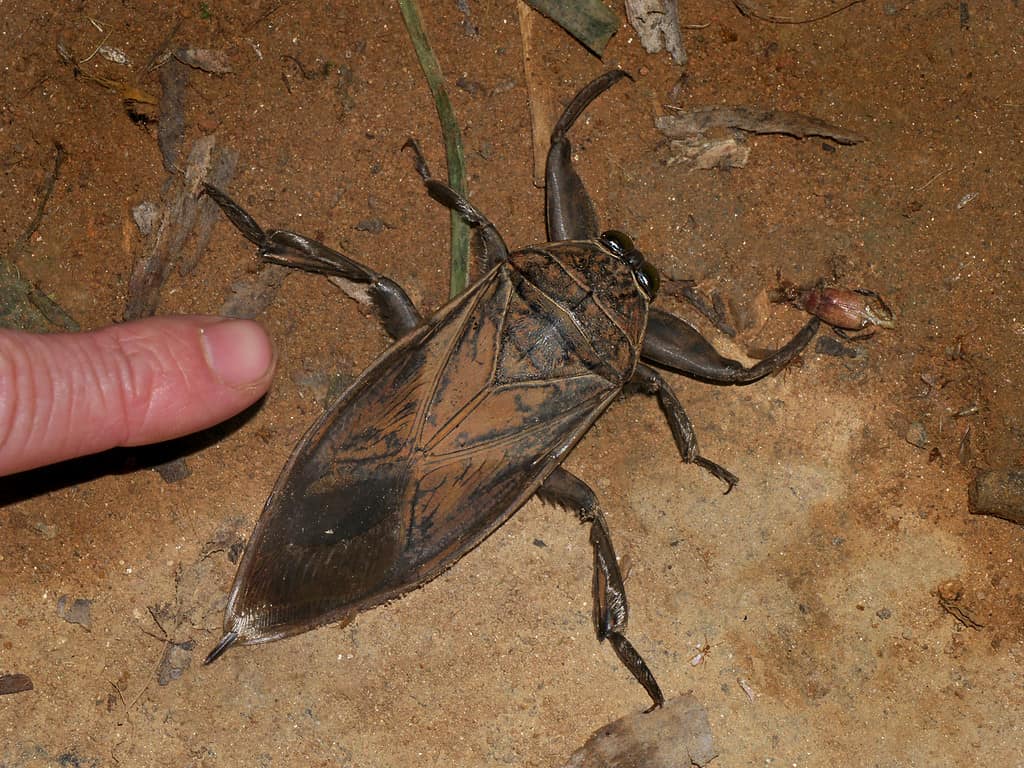
The hind legs of giant water bugs are covered in little hairs that help them swim with greater ease.
©Frank Vassen from Brussels, Belgium, CC BY 2.0 – License
Much like their name, giant water bugs are, well, giant. This means that every part of them is bound to be large, including their bulging set of compound eyes. Although there isn’t much known about the intricacies of giant water bug vision, these insects evolved to have large eyes in order to better spot their prey underwater.
10. Honorable Mention – Jumping Spider
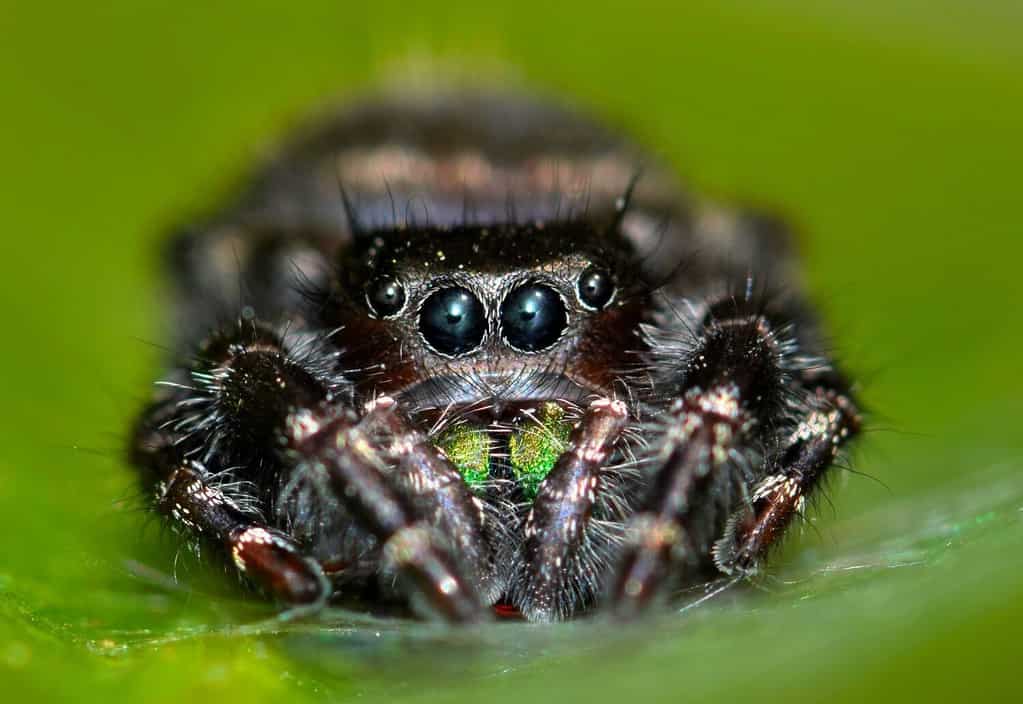
Jumping spiders are able to propel themselves so high in the air by redirecting blow flow to their legs.
©Brett Hondow/Shutterstock.com
Although spiders aren’t bugs, the jumping spider deserves a place on this list, so we’re giving it an honorable mention. It’s hard to deny that the large eyes of a jumping spider have an undeniable “puppy-like” essence about them. These arachnids have become very popular in recent years and have even become a household name since the release of the show “Lucas the Spider.” Believe it or not, their eyes have a function beyond melting the hearts of all who look into them.
Unlike most of the insects on this list, jumping spiders don’t have compound eyes. Instead, they have “camera-type” eyes, much like mammals. According to Science News, “Their sight is comparable to that of much larger animals like pigeons, cats, and elephants. In fact, human visual acuity is only about five to 10 times better than a jumping spider’s.” Unlike other spiders, they don’t construct webs to capture their prey. Instead, they use their incredible eyesight to sneak up on their dinner and pounce when the moment is right.
The photo featured at the top of this post is © Lauren Suryanata/Shutterstock.com
Thank you for reading! Have some feedback for us? Contact the AZ Animals editorial team.






